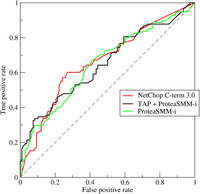Receiver-operator characteristic

Imagine you are trying to catch a ball that someone is throwing to you. You have to decide whether you should put your hands up and try to catch the ball or let it go by. It all depends on how well you can see the ball and how fast it is coming at you.
Similarly, in medical testing, doctors and scientists use receiver-operator characteristic (ROC) curves to figure out how well a test can determine if a person has a disease or condition. The ROC curve helps to plot the results of a test to determine its accuracy.
Say you went to the doctor for a check-up and the doctor ordered a test to determine if you have a disease. The test will give you a score or a result that can either be positive or negative. Based on this score, the doctor will decide if you have the disease or not.
However, the test may not always be accurate. The ROC curve helps to determine the accuracy of the test by plotting how well the test can detect true positives (people who are truly positive for the disease) versus false positives (people who are negative for the disease but the test incorrectly identified them as positive).
To make it easier to understand, let's use an example of a test for a disease called "ABC." Say the test gives a score from 0-100, with 0 meaning you don't have the disease and 100 meaning you do have the disease.
The ROC curve will plot the true positive rate (TPR) versus the false positive rate (FPR) for a range of scores.
In this case, the TPR is the proportion of people who truly have the disease and tested positive for it, while the FPR is the proportion of people who don't have the disease but tested positive for it.
As the threshold score for the test increases, the TPR decreases and the FPR increases. The goal is to find the threshold score where the TPR is high and the FPR is low, meaning the test is accurate in identifying people with the disease while minimizing false positive results.
So, the ROC curve helps doctors and scientists understand how well a test can distinguish between true positives and false positives, and determine the accuracy of the test at different score thresholds.
Similarly, in medical testing, doctors and scientists use receiver-operator characteristic (ROC) curves to figure out how well a test can determine if a person has a disease or condition. The ROC curve helps to plot the results of a test to determine its accuracy.
Say you went to the doctor for a check-up and the doctor ordered a test to determine if you have a disease. The test will give you a score or a result that can either be positive or negative. Based on this score, the doctor will decide if you have the disease or not.
However, the test may not always be accurate. The ROC curve helps to determine the accuracy of the test by plotting how well the test can detect true positives (people who are truly positive for the disease) versus false positives (people who are negative for the disease but the test incorrectly identified them as positive).
To make it easier to understand, let's use an example of a test for a disease called "ABC." Say the test gives a score from 0-100, with 0 meaning you don't have the disease and 100 meaning you do have the disease.
The ROC curve will plot the true positive rate (TPR) versus the false positive rate (FPR) for a range of scores.
In this case, the TPR is the proportion of people who truly have the disease and tested positive for it, while the FPR is the proportion of people who don't have the disease but tested positive for it.
As the threshold score for the test increases, the TPR decreases and the FPR increases. The goal is to find the threshold score where the TPR is high and the FPR is low, meaning the test is accurate in identifying people with the disease while minimizing false positive results.
So, the ROC curve helps doctors and scientists understand how well a test can distinguish between true positives and false positives, and determine the accuracy of the test at different score thresholds.
Related topics others have asked about:
